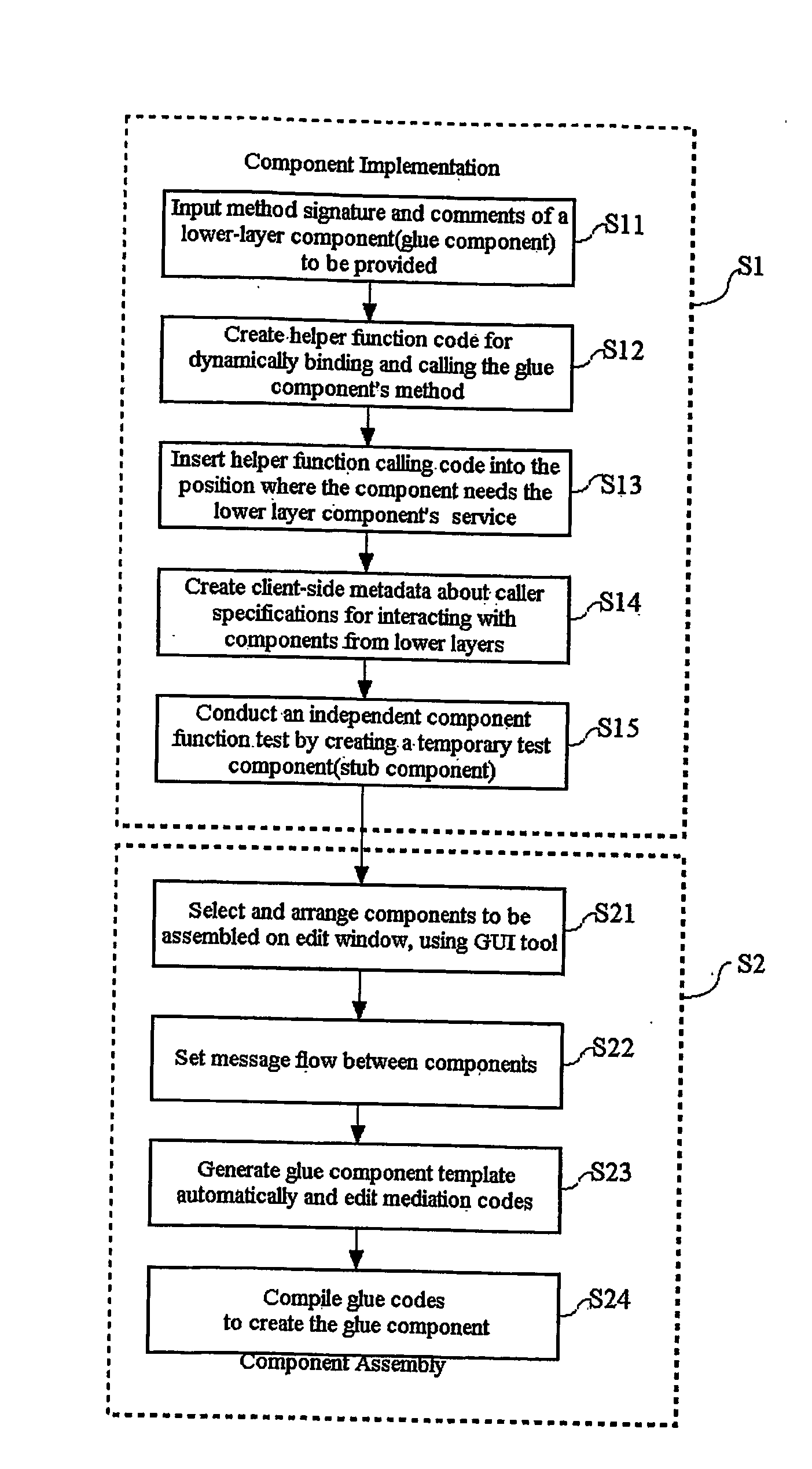Method and system of developing a software with utilizing extended metadata of component under component-based development environment
a component-based development environment and component-based technology, applied in the field of component-based software development, can solve the problems of limiting the productivity improvement of developing software, the complexity and size of information systems required by modern management, and the conventional methods of developing software, so as to improve the reusability of components, reduce unnecessary system load or network load, and improve the productivity of developing software
- Summary
- Abstract
- Description
- Claims
- Application Information
AI Technical Summary
Benefits of technology
Problems solved by technology
Method used
Image
Examples
Embodiment Construction
[0057] As described, if the metadata are extended to contain client-side as well as server-side interface information, it is possible to dynamically read (that is, reflect) the metadata of components on both sides to be connected by an assembling tool and to automatically create the glue code templates.
[0058] The component assembly technology according to the invention implements a multi-layered structure of assembling binary components, and can also maximize the reusability of components by inserting the mediation logic for mediating syntactic or semantic inconsistency in parameters among heterogeneous components, into the glue codes according to the invention.
[0059] Conventionally, when developing the intermediate-layer components completing their own service depending on lower-layer components, a development sequence is required because an identifier of a lower-layer component and interface specification must be known. According to the present invention, however, a new identifi...
PUM
 Login to View More
Login to View More Abstract
Description
Claims
Application Information
 Login to View More
Login to View More - R&D
- Intellectual Property
- Life Sciences
- Materials
- Tech Scout
- Unparalleled Data Quality
- Higher Quality Content
- 60% Fewer Hallucinations
Browse by: Latest US Patents, China's latest patents, Technical Efficacy Thesaurus, Application Domain, Technology Topic, Popular Technical Reports.
© 2025 PatSnap. All rights reserved.Legal|Privacy policy|Modern Slavery Act Transparency Statement|Sitemap|About US| Contact US: help@patsnap.com



